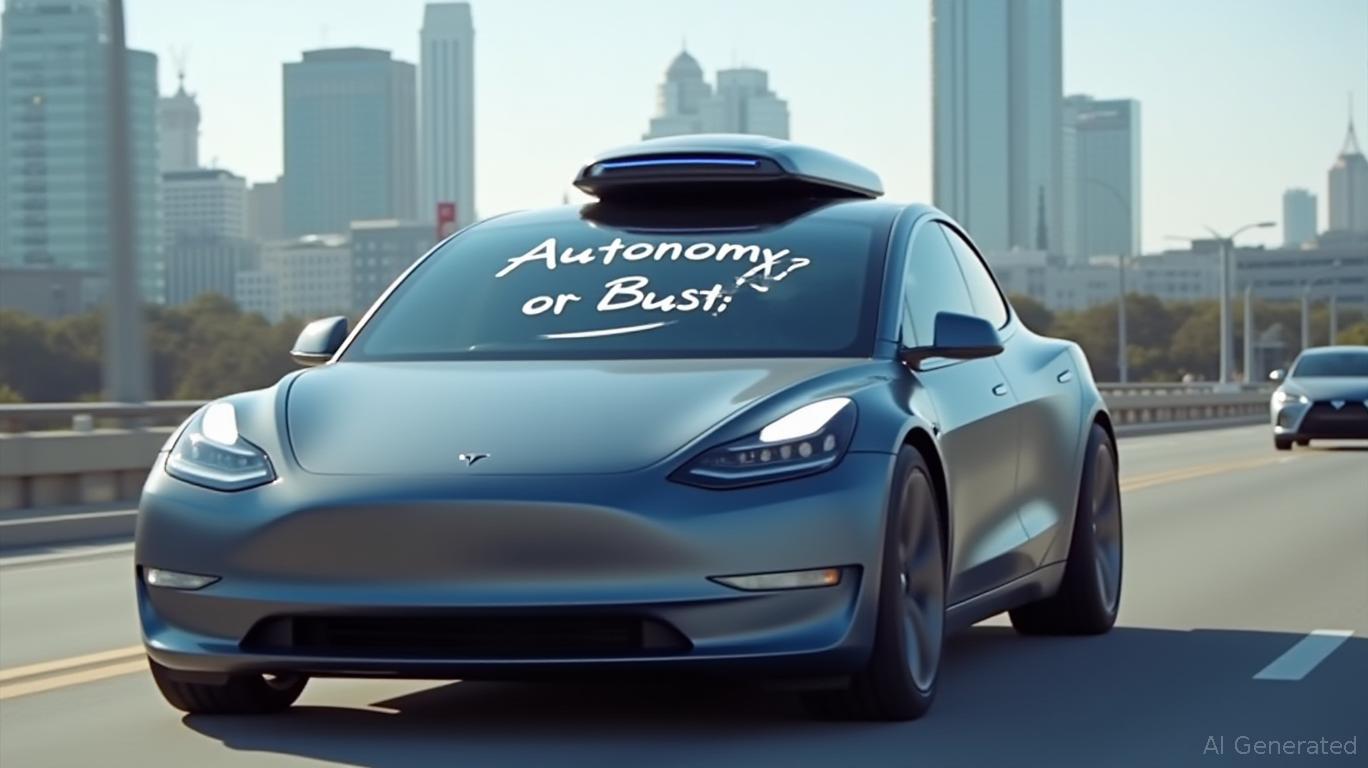Tesla's Robotaxi Rollout: A Gamble or Game-Changer?
The electric vehicle revolution is just the beginning. Now,
is betting its future—and its $500 billion valuation—on a bold new chapter: autonomous robotaxis. But as the company prepares to launch its first fleet in Austin this month, a critical question looms: Can Tesla's vision of a camera-only, fully autonomous future outpace rivals like Waymo, or is this a high-stakes gamble that could crater its stock?
Tesla's Autonomous Ambition: All-in on Cameras, But Can It Deliver?
Tesla's Full Self-Driving (FSD) system, now at Version 13, is the backbone of its robotaxi plan. Unlike Waymo's lidar-equipped vehicles, Tesla relies entirely on cameras—a cheaper, “pure vision” approach. But here's the rub: safety data is missing. Musk claims FSD is “10x safer than humans,” yet Tesla has refused to share metrics like miles between disengagements or crash rates.
The first test comes June 22, when 10–20 autonomous Model Ys will hit Austin streets. The goal? Scale to 1,000 vehicles nationwide by year-end. But analysts are skeptical. The vehicles will operate in geofenced zones, require remote human monitoring, and face Texas police reports of freezing in complex traffic—a red flag for reliability.
Waymo's Steady Climb: Safety, Scale, and Modular Tech
While Tesla races to launch, Waymo is already ahead. Its 6th-gen system, paired with lidar and advanced sensors, has racked up 71 million autonomous miles with 88% fewer serious injury crashes than human drivers. Waymo's 2025 moves are methodical: expanding to Atlanta, Miami, and Washington, D.C. by 2026, while Tokyo tests begin.
Waymo's edge? Modular design. Its software works across vehicles like the Zeekr RT and Hyundai Ioniq 5, giving it flexibility. Tesla's Cybercab—a true autonomous-only vehicle—isn't even slated for production until 2026, leaving its Austin rollout reliant on modified Model Ys.
The Elephant in the Boardroom: Valuation vs. Reality
Tesla's $500 billion valuation hinges on robotaxis. But here's the math:
- Forward P/S Ratio: 10.02—double its historical average.
- Execution Risk: Missed deadlines (Cybercab delayed to 2026), stock down 12% YTD, and short interest at $20 billion.
- Competitor Contrast: Waymo's parent, Alphabet, trades at a P/S of 4.13—half Tesla's multiple—despite its proven autonomous revenue streams.
Key Watchpoints: Tesla's Make-or-Break Milestones
- Safety Transparency: Will Tesla release disengagement reports or third-party audits? Without this, investors can't trust Musk's claims.
- Cybercab Readiness: Can Tesla finalize production in 2026, or will delays persist?
- Regulatory Hurdles: Texas's lax rules won't save Tesla if it can't secure permits in stricter states like California.
- Profitability: Scaling from 10 to 1,000 vehicles costs money—remote monitoring, legal battles, and infrastructure all eat into margins.
Investment Takeaway: Wait for Clarity, or Dive In?
Tesla's stock is a high-risk, high-reward bet. Bulls see a $10,000/vehicle profit margin and a $100 billion annual revenue stream by 2030. Bears see overvaluation, execution failures, and Waymo's head start.
The Verdict: Hold off on Tesla until it delivers concrete milestones: Cybercab production, Texas expansion success, and a safety report that passes scrutiny. Meanwhile, Waymo's steady progress makes Alphabet a safer play in autonomous tech.
If you're all-in on Tesla's vision, treat it like a speculative growth stock—allocate a small portion of your portfolio, and brace for volatility. The robotaxi race isn't over, but right now, Waymo's in the driver's seat.
Final Word:
Tesla's robotaxi bet could be its biggest win—or its biggest bust. For now, the jury's out. Stay tuned, stay skeptical, and remember: in autonomous driving, the road to success is littered with potholes… and overvalued stocks.

Comments
No comments yet